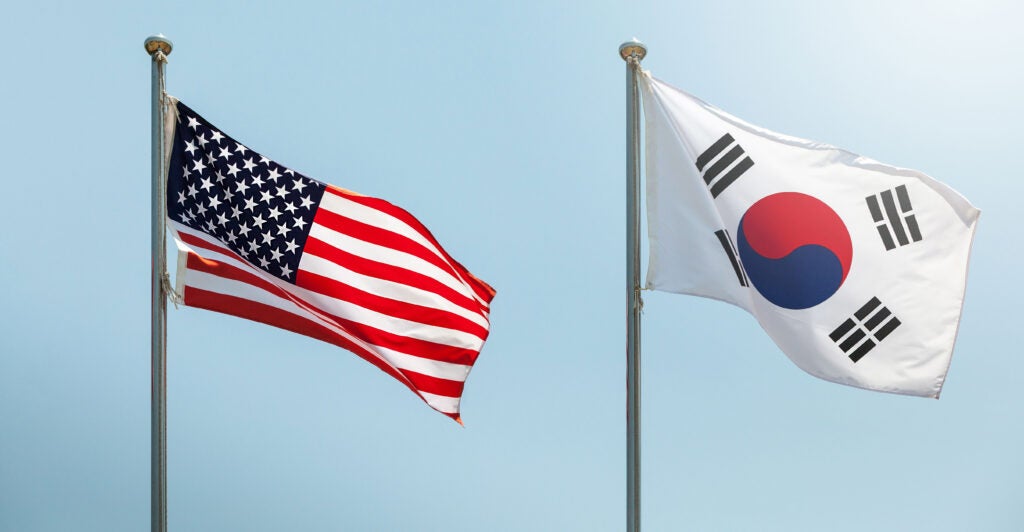Policymakers in Washington and Seoul rightly suspect that by the 70th anniversary of Korean-American relations, the agenda for the two nations is way more than just wrapping up the aftermath of the Korean War.
No two countries have benefited more from the world’s free and open spaces than South Korea and the United States.
This is not about defending some mythical rules-based order. This is about two great powers working together to protect their interests among the troubles of the modern world.
There is a not-so-secret formula for getting the most out of the partnership of the two nations. Enduring partnerships work together on all common vital interests, elevating the South Korea-U.S. strategic partnership beyond primarily security cooperation and Korean pop music boy bands to cover the breadth of diplomatic, economic, technological, and cultural spheres. There are many areas of opportunity for greater cooperation.
Here, we want to focus on the two that are transformative.
The first is that the burgeoning partnership has to build on a firm foundation of regional peace and stability. Looking to a promising future is fine, but security still matters.
Integral to the foundation of peace and stability in Northeast Asia is the unbreakable bond of trust and confidence between the U.S., South Korea, and Japan. More than just consultation and cooperation, the three countries are the quintessential trilateral team to ensure a stable region.
Fortunately, the U.S. is blessed with governments in Seoul and Tokyo that understand the value of making our three countries the Three Musketeers of Northeast Asia. Both administrations should be commended for their sincere efforts to look to the future of bilateral relations to the benefits of both countries.
The U.S. task is simple: Remain a strong and committed partner for both and start thinking creatively of how to take what we can do together to reach the next pragmatic level. For instance, perhaps Washington, along with Tokyo, ought to be thinking about how we raise the status of the Indo-Pacific relative to its importance in the global community by proposing to add South Korea to the Group of Seven.
On another practical front, Seoul has already taken some tentative steps, but it’s time for the U.S. and South Korea to leverage the best of what they both can bring to the table—diplomatic clout, private sector investment, and capacity-building in the free and open spaces that are important to both of us.
Free and open spaces is about building resilient and free paths of supply chains, commerce, and cooperation without the malicious bullying of great power politics and spheres of influence. Connecting these spaces together is a project where both America and South Korea have the right toolkit to have impact. Indeed, now is the time for Washington and Seoul to focus on further advancing the U.S.- South Korea bilateral alliance onto the global stage.
The potential space for such timely greater engagements span from the Nordic countries to central and southern Europe; from the Black Sea to the Caucuses and Central Asia; and from the eastern Mediterranean to the Middle East and West Africa and then across the Indo-Pacific to Taiwan, Japan, and South Korea; and also east across the Atlantic in the Western Hemisphere.
South Korea is already engaging beyond Northeast Asia in important ways, becoming a major arms supplier for Poland, for example. Conversely, European countries are collectively one of the biggest foreign direct investors in South Korea.
Yet there’s more that can and should be done. South Korea, for example, could contribute to the Three Seas Initiative, a commercial fund to build out Europe’s north-south infrastructure and connectivity. South Korea could and should participate in investing in the reconstruction of Ukraine, a partner project of the Three Seas Initiative.
Furthermore, South Korea could join in developing the Middle Corridor—the Trans-Caspian International Transport Route—linking Central Asia’s energy, resources, and manufacturing potential through the Caucuses to the rest of the world, a space where South Korean companies already have been quite active.
Building free and open spaces not only benefits great trading and partner nations such as South Korea and the U.S. in reducing the space for malicious powers to meddle and disrupt stability across Eurasia. Partnering on these activities could be transformational for South Korean-American relations, but more importantly for our freedom, prosperity, and security for the next 70 years.
Seizing such greater strategic clarity and refinement, particularly at this critical juncture of an evolving geopolitical environment, would be a fulfilling way to gain from an ever-evolving partnership on key policy fronts to move the U.S.-South Korea bilateral alliance onward and upward.
Have an opinion about this article? To sound off, please email letters@DailySignal.com and we’ll consider publishing your edited remarks in our regular “We Hear You” feature. Remember to include the url or headline of the article plus your name and town and/or state.
